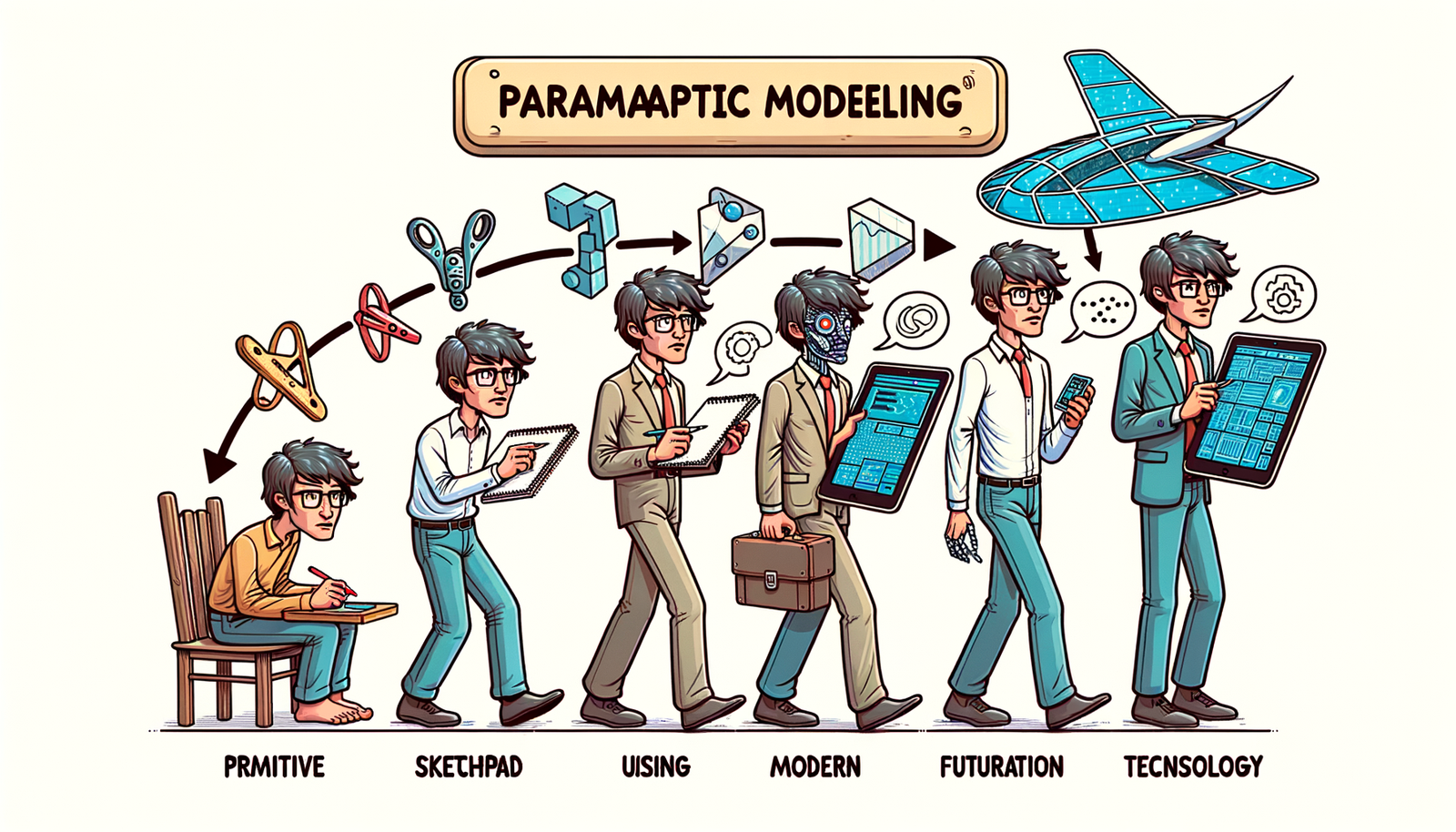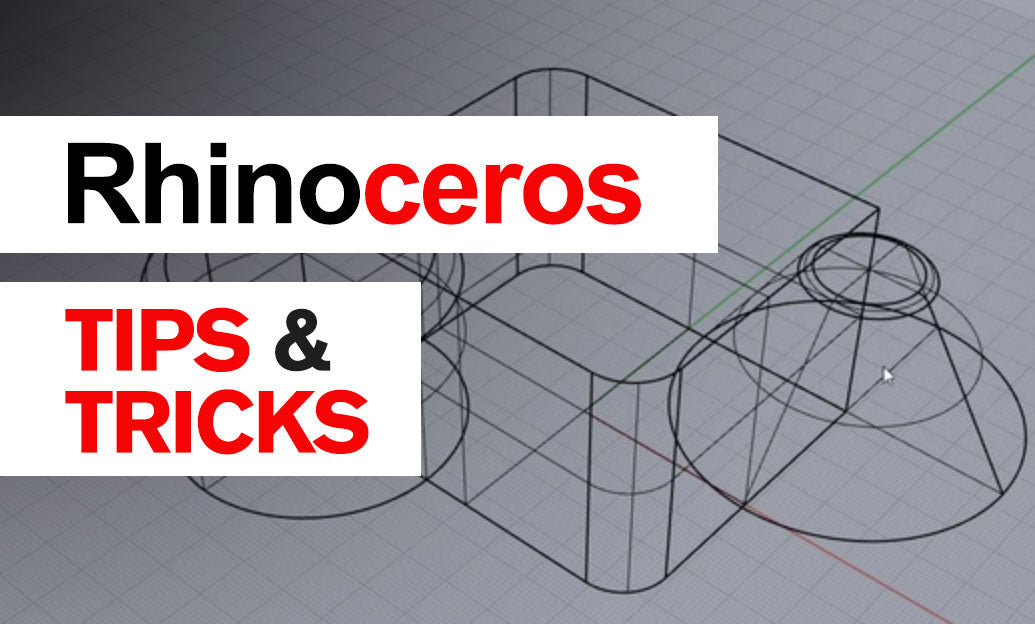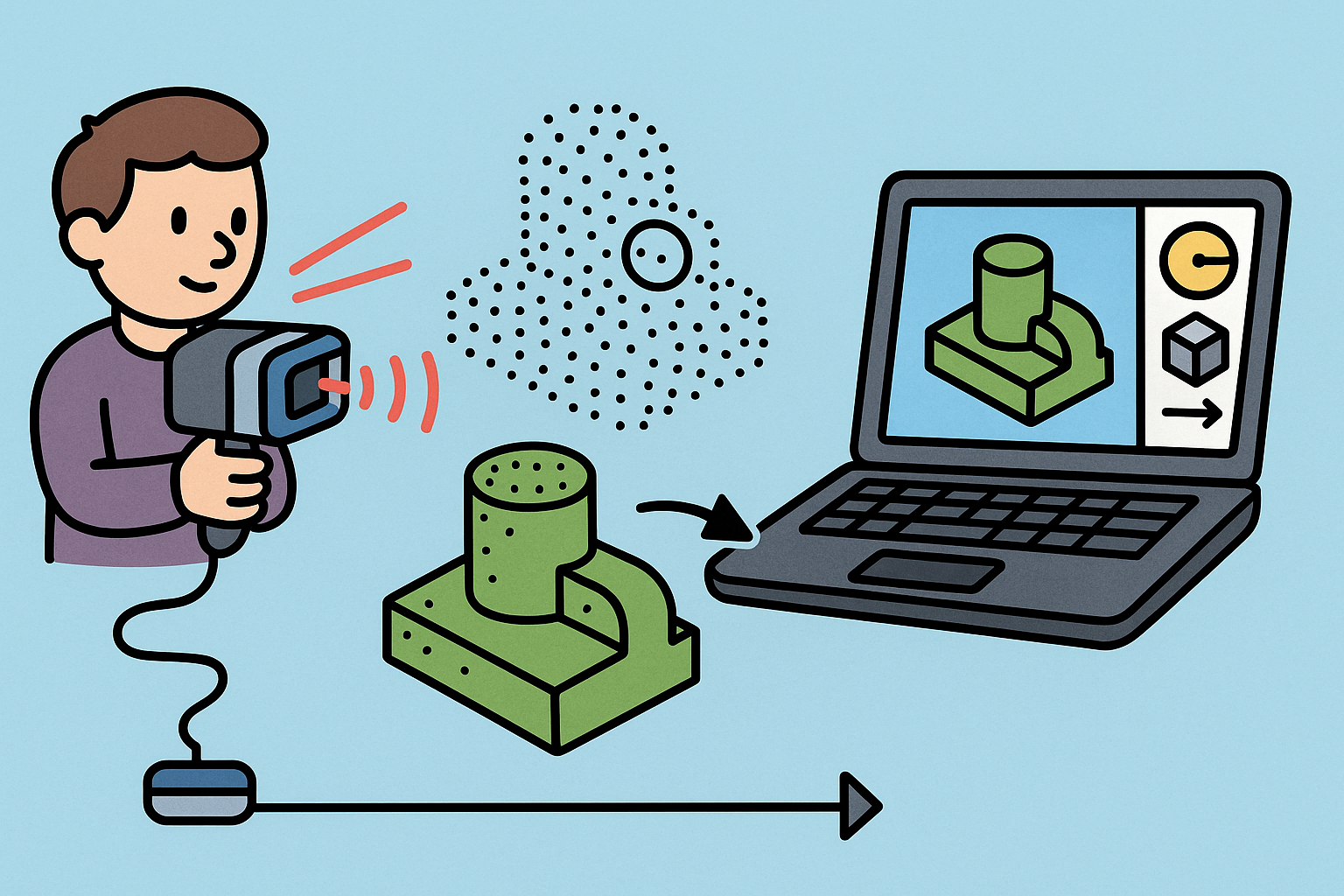Your Cart is Empty
Customer Testimonials
-
"Great customer service. The folks at Novedge were super helpful in navigating a somewhat complicated order including software upgrades and serial numbers in various stages of inactivity. They were friendly and helpful throughout the process.."
Ruben Ruckmark
"Quick & very helpful. We have been using Novedge for years and are very happy with their quick service when we need to make a purchase and excellent support resolving any issues."
Will Woodson
"Scott is the best. He reminds me about subscriptions dates, guides me in the correct direction for updates. He always responds promptly to me. He is literally the reason I continue to work with Novedge and will do so in the future."
Edward Mchugh
"Calvin Lok is “the man”. After my purchase of Sketchup 2021, he called me and provided step-by-step instructions to ease me through difficulties I was having with the setup of my new software."
Mike Borzage
Design Software History: The Evolution of Parametric Modeling: From Sketchpad to Modern Design Software and Beyond
July 06, 2024 6 min read


Origins and Early Developments in Parametric Modeling
Understanding the history of design software begins with grasping the essence of parametric modeling. In essence, parametric modeling refers to the process of designing objects and systems based on parameters, which are variables that can be adjusted to alter the final form of the design. This approach allows for dynamic adjustments and the ability to explore various design iterations efficiently.
The origins of parametric modeling can be traced back to the early concepts and mathematical foundations set forth by pioneering researchers. The fundamental principles of parametric modeling involve the use of geometric and algebraic equations to define shapes and forms. By utilizing parameters, designers can create flexible models that can be easily modified without the need to redraw or recreate the entire design.
Pioneers and Key Figures
A significant milestone in the history of parametric modeling was the work of Ivan Sutherland with his development of Sketchpad in the early 1960s. Sutherland's breakthrough invention revolutionized the way designers interacted with computers, providing a graphical user interface that allowed for direct manipulation of objects on the screen. Sketchpad's influence extended beyond its technical capabilities; it laid the groundwork for future advancements in computer-aided design (CAD).
During this period, institutions like MIT's Project MAC played a crucial role in advancing parametric modeling. Project MAC, short for "Multiple Access Computer," was instrumental in exploring the potential of interactive computing and its applications in various fields, including design. The collaborative efforts of researchers at MIT and other institutions led to the development of early parametric modeling tools, setting the stage for future innovations.
Initial Applications and Software
The early software applications of parametric modeling faced several limitations, primarily due to the technological constraints of the time. Early tools were often cumbersome and lacked the intuitive interfaces that modern software offers. Despite these challenges, these primitive tools demonstrated the potential of parametric modeling and paved the way for more sophisticated applications.
Examples of early parametric modeling tools include programs that facilitated basic geometric constructions and allowed for limited parameter adjustments. While these tools were rudimentary by today's standards, they marked the beginning of a transformative journey in the field of design software.
Breakthroughs and Major Milestones
Pro/ENGINEER and the Parametric Revolution
The introduction of Pro/ENGINEER by Parametric Technology Corporation (PTC) in 1988 marked a significant turning point in the history of design software. Pro/ENGINEER was one of the first CAD systems to fully embrace the principles of parametric modeling, offering a feature-based approach that allowed designers to define relationships and constraints between different components of a design.
The impact of Pro/ENGINEER on the CAD industry was profound. Its ability to maintain design intent and facilitate rapid iterations revolutionized the way engineers and designers approached their work. Major engineering firms quickly adopted Pro/ENGINEER, recognizing its potential to streamline the design process and improve overall efficiency.
Technological Innovations
One of the key technological innovations that emerged from the development of Pro/ENGINEER was the concept of feature-based modeling. This approach allowed designers to create complex models by defining individual features, such as holes, fillets, and extrusions, which could be easily modified and adjusted. The introduction of parametric constraints and relations further enhanced the flexibility and adaptability of designs.
The integration of parametric constraints and relations in design processes enabled designers to establish dependencies between different elements of a model. This innovation ensured that changes made to one part of the design would automatically propagate to other related elements, maintaining the overall integrity of the design.
Rise of Competitive Software
As the benefits of parametric modeling became more apparent, other software developers began to enter the market with their own solutions. One notable competitor was SolidWorks, which was introduced in 1995. SolidWorks offered a user-friendly interface and powerful parametric modeling capabilities, quickly gaining popularity among designers and engineers.
The emergence of competitive software led to a diverse landscape of parametric modeling tools, each with its own unique features and strengths. The industry reception of these tools varied, with some companies preferring the robustness of Pro/ENGINEER, while others favored the ease of use offered by SolidWorks.
Integration and Expansion into Various Industries
Automotive and Aerospace Industries
The adoption of parametric modeling had a significant impact on the automotive and aerospace industries. In automotive design, tools like CATIA by Dassault Systèmes became essential for creating complex models and optimizing designs for performance and manufacturability. Parametric modeling enabled automotive engineers to iterate on designs quickly, reducing the time required to bring new vehicles to market.
Similarly, the aerospace industry benefited from the capabilities of parametric modeling. The ability to define precise relationships and constraints allowed aerospace engineers to develop intricate components and assemblies with a high degree of accuracy. This precision was crucial for ensuring the safety and reliability of aerospace systems.
Architectural Applications
Parametric modeling also found applications in the field of architectural design. Software like Revit by Autodesk became a cornerstone for architects looking to implement Building Information Modeling (BIM). BIM leverages parametric modeling to create detailed digital representations of buildings, including their physical and functional characteristics.
The benefits of parametric modeling in architecture extend beyond visualization. It enables architects to explore sustainable design practices by simulating various environmental conditions and optimizing building performance. This capability is essential for creating energy-efficient and environmentally friendly structures.
Consumer Products and Manufacturing
In the realm of consumer products and manufacturing, parametric modeling has become a vital tool for designing and producing a wide range of goods. From consumer electronics to household appliances, parametric modeling enables designers to create innovative products that meet the demands of modern consumers.
The impact of parametric modeling on manufacturing processes is equally significant. By defining precise parameters and relationships, manufacturers can streamline production workflows and achieve higher levels of accuracy and consistency. This capability is particularly valuable for mass customization, where products can be tailored to individual customer preferences.
Future Directions and Emerging Trends
Advances in Computational Design and AI
The future of parametric modeling is being shaped by advances in computational design and the integration of artificial intelligence (AI). AI and machine learning algorithms are increasingly being used to enhance parametric modeling capabilities, enabling designers to explore complex design spaces and generate optimized solutions automatically.
One of the most promising applications of AI in parametric modeling is generative design. Generative design leverages AI to create a wide range of design options based on specified constraints and goals. Designers can then evaluate these options and select the most suitable solution, leading to innovative and efficient designs.
Cloud-Based and Collaborative Platforms
The emergence of cloud-based CAD solutions like Onshape is transforming the way designers and engineers collaborate on projects. Cloud-based platforms offer real-time collaboration, version control, and accessibility from any location, making it easier for teams to work together seamlessly.
These platforms also facilitate the integration of parametric modeling with other digital tools and services, creating a more interconnected and efficient design ecosystem. As cloud computing technology continues to evolve, the capabilities of cloud-based CAD solutions are expected to expand further.
Sustainability and Environmental Considerations
Parametric modeling is playing a crucial role in promoting sustainable design practices. By enabling designers to simulate and optimize various environmental factors, parametric modeling helps create designs that are more energy-efficient and environmentally friendly. This capability is essential for addressing the growing need for sustainable solutions in various industries.
Looking ahead, parametric modeling has the potential to further reduce environmental impact through optimized design. By leveraging advanced algorithms and simulation tools, designers can create products and systems that minimize resource consumption and waste, contributing to a more sustainable future.
Conclusion and Reflections
In summary, the history of parametric modeling is a testament to the transformative impact of design software on various industries. From its origins in the early concepts and mathematical foundations to the breakthroughs achieved by pioneers like Ivan Sutherland and the innovations brought by companies like PTC and Dassault Systèmes, parametric modeling has revolutionized the way we approach design and engineering.
As we look to the future, the continued integration of AI, cloud-based platforms, and sustainability considerations will further enhance the capabilities of parametric modeling. The journey of parametric modeling is far from over, and its potential to drive innovation and efficiency in design processes remains as promising as ever.
Also in Design News

Rhino 3D Tip: Rhino Material Optimization: Nesting, Lightweighting, and Cut-Length Reduction
December 31, 2025 2 min read
Read More
Design Software History: Constraint Solving in CAD: From Sketchpad to Modern Parametric Engines
December 31, 2025 12 min read
Read More
Intent-Aware Scan-to-BRep: Integrating LiDAR Point Clouds into Solid Modeling Pipelines
December 31, 2025 12 min read
Read MoreSubscribe
Sign up to get the latest on sales, new releases and more …


